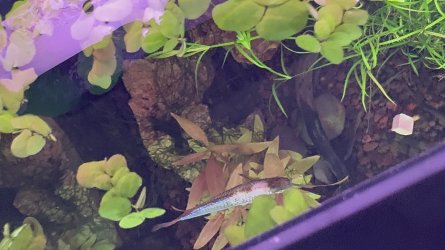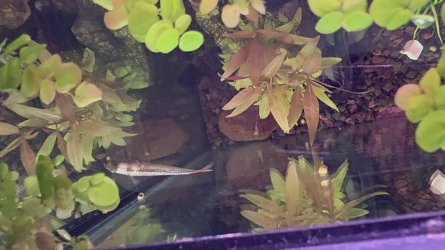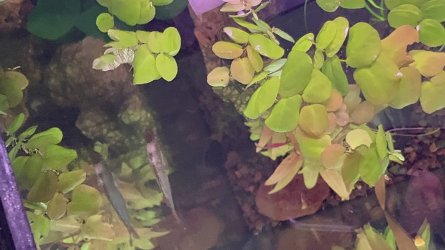luke4868
Fish Fanatic
Tank size: 200 litre
tank age: 8 months
pH: 7.2
ammonia: 0
nitrite: 0
nitrate: 0
kH: unknown
gH: unknown
tank temp: 23c
Fish Symptoms (include full description including lesion, color, location, fish behavior):
1 rainbow died yesterday, and was already being eaten by snails when I found it, no obvious issues as it was already half eaten.
Today whilst feeding, spotted two more rainbows with white marks on their top and sides, looks like missing scales - and they are not as active as the other rainbows
Volume and Frequency of water changes: 10%/20L every 2-3 weeks, or when nitrate becomes present (never has so far as its got plants and lava rocks)
Chemical Additives or Media in your tank: none, regular fluval 207 filter setup
Tank inhabitants: Rainbows x 11 (from 12) and 4 snails (Neritina Semconic x 2 with a batch of babies + 2 x white wizard snails - Filopaludina Martensi)
Recent additions to your tank (living or decoration): none
Exposure to chemicals: none
tank age: 8 months
pH: 7.2
ammonia: 0
nitrite: 0
nitrate: 0
kH: unknown
gH: unknown
tank temp: 23c
Fish Symptoms (include full description including lesion, color, location, fish behavior):
1 rainbow died yesterday, and was already being eaten by snails when I found it, no obvious issues as it was already half eaten.
Today whilst feeding, spotted two more rainbows with white marks on their top and sides, looks like missing scales - and they are not as active as the other rainbows
Volume and Frequency of water changes: 10%/20L every 2-3 weeks, or when nitrate becomes present (never has so far as its got plants and lava rocks)
Chemical Additives or Media in your tank: none, regular fluval 207 filter setup
Tank inhabitants: Rainbows x 11 (from 12) and 4 snails (Neritina Semconic x 2 with a batch of babies + 2 x white wizard snails - Filopaludina Martensi)
Recent additions to your tank (living or decoration): none
Exposure to chemicals: none
Attachments
Last edited:





